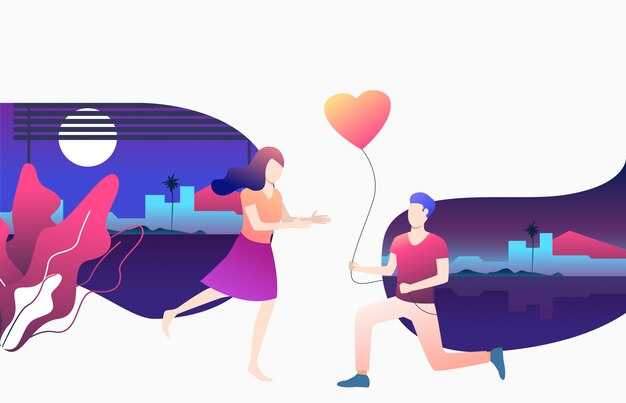If someone repeatedly behaves in ways that hurt you—over and over—this is rarely a fleeting phase; it’s a pattern. If they withdraw when you’re upset, alternate between warmth and distance, or profess care without truly being present, this isn’t merely a rough patch. It’s emotional unavailability. For people who experienced trauma in childhood, this pattern can feel dangerously familiar. Growing up in a household where emotions were ignored or shamed teaches you early not to expect emotional presence from others. You learn to guess other people’s feelings, to tone yourself down, to stay small, to prioritize other people’s moods, and to hide your own hurt. So when someone in your life behaves as distant or avoidant, it can register as normal rather than wrong. You may not like it, but it doesn’t necessarily register as unacceptable—so you wait and you try harder. You tell yourself they just need time, or that it’s their trauma and they should go to therapy. In truth, that’s often a way of denying what’s really happening. You can feel the emotional gap and the loneliness that comes from being with someone who won’t meet you emotionally, yet convince yourself this is just how relationships are and that wanting more means you’re asking too much. That kind of coping disconnects you from your own clarity. It distances you from your inner sense of self and keeps you stuck with people who cannot—or will not—meet you emotionally. That’s not what you want. Emotional unavailability isn’t always dramatic or obviously hostile. It doesn’t mean someone is cruel or a bad person. It means they’re unwilling or unable to respond with openness, emotional honesty, and consistency. Sometimes they’ll be present when it’s easy for them, or when they fear losing you; but they disappear the moment intimacy requires discomfort. They’ll trade in surface-level expressions—“I miss you,” occasional affection when you pull away or set a boundary—yet when vulnerability, repair, or emotional attunement is needed, they vanish. They shut down, change the subject, withdraw, go quiet, or suggest you’re “too intense,” because strong feelings make them uneasy. That pattern—appearing in safe moments but retreating from real connection—is what emotional unavailability often looks like. For those raised without emotionally attuned caregivers, this dynamic can even feel comforting: it allows the familiar work of striving for love, hoping the other person will eventually open up. But that hope—telling yourself to be patient, to love them through it—is a trap. If you are doing all the emotional labor, you’re effectively alone in the relationship. Love isn’t supposed to be one-sided. Here are five signs you’re dealing with someone who is emotionally unavailable, and what to notice in yourself when it occurs. One, they deflect or shut down when emotions come up. When vulnerability is offered, they go quiet, switch topics, claim exhaustion, or respond with sarcasm. If attempts at closeness consistently extinguish the conversation, they are not emotionally available. Two, they avoid clarity about the relationship. When asked where things stand, phrases like “I don’t do labels” or “Let’s not overthink it” come up. They enjoy the connection but resist commitment and accountability. Without clear terms, you remain stuck in limbo. Three, they are emotionally hot and cold. They may text frequently but never truly ask how you’re doing. They are affectionate one day and aloof the next. The inconsistency is felt in emotional tone as much as in actions, leaving you anxious and uncertain. Four, a wall stays up even when you approach with kindness. You offer softness and they joke it away. You speak honestly and they seem uncomfortable. You express hurt and they accuse you of being dramatic. If emotional intimacy is always met with discomfort, patience alone won’t lower that barrier. Five, you feel lonelier with them than alone. This is the crucial sign. Sharing space or conversation yet feeling unseen, editing your feelings to keep the peace—that’s not connection; that’s emotional self-abandonment. This pattern is very common among people who grew up with trauma. If past experiences still shape whom you fall for and how your relationships unfold, a free quiz is available in the top line of the description below this video to help clarify how that might be operating in your life. Being with someone who is emotionally unavailable feels lonely even when they’re physically close. Conversations fail to land. Sharing doesn’t lead to opening or repair. Over time it erodes you: you speak less, ask for less, dim your light, lower your expectations, and start blaming yourself for the emptiness. You may question whether you’re too sensitive or too intense and begin to second-guess your instincts. You suppress your gut reactions, wait for the “right” moment to bring things up, and tell yourself you can manage and must be strong. Meanwhile, you carry the entire emotional burden of the relationship on your own—you make room for two, but only one person is present. If years of not being heard lie behind you, this hits particularly hard: earning attention by shrinking, staying silent, and not needing anything slowly chips away at you. That is the cost, not a sign of personal failure, but a consequence of an arrangement that is not love—it is slow emotional starvation. It is reasonable to want more than a one-sided dynamic. It’s reasonable to say, “This isn’t working,” even if nothing dramatic has happened. It’s reasonable to stop trying to make something meaningful from scraps. You don’t have to keep shrinking yourself to maintain the peace. You don’t need to pretend you don’t crave depth, honesty, and meaning. You don’t have to contort yourself into a version that makes someone else comfortable. Here’s a hard truth: sometimes the person you care about will never be able to show up emotionally. It may not be a matter of ignorance—they may simply be unwilling to do the inner work required. That cannot be changed by how much you love them, understand them, or try to teach them a different way. If only one person is trying, then only one person is in the relationship. Recognizing that is what breaks the trance. If falling into unavailable partnerships is a recurring pattern for you, there is an online course titled Dating and Relationships for People with Childhood PTSD linked in the second line of the description below this video. The course was designed to map out exactly how these soul-crushing cycles form and how to shift so you develop the awareness and capacity to find and be attracted to a healthy partner. Wanting true connection isn’t crazy. Asking for enough isn’t selfish. You don’t need permission to walk away from someone who keeps you stuck. You don’t have to fix their past, explain your needs more clearly, or wait until you’re certain nothing will change—you already know what’s happening. The question is whether you will listen to yourself this time. Leaving something that still contains good moments is difficult and can make it feel as if nothing good will ever come again. But staying in a situation that drains, silences, and hollows you out is harder. If you are done carrying the weight for two people, let that be the signal to stop. Step back. Protect what’s still alive inside you, even if it means giving up the imagined future you held for that relationship. That future was potential—not reality—and releasing it frees you. If this video resonated, a related one is linked nearby. See you soon. It can be hard to get a clear read on those moments—what just happened, what the underlying issue is, whether it’s you or the other person, and what to say next. [Music]
What to do next — practical steps
If this describes your relationship, you don’t have to make a dramatic decision immediately. Start by checking in with yourself and taking small, deliberate steps that protect your wellbeing and build clarity.
- Pause and name the pattern: write down recent examples of emotional withdrawal or inconsistency so you can see the frequency and impact without minimizing it.
- State a clear need and boundary: tell the person briefly and specifically what you need (for example, “When I bring up something that hurts, I need us to sit with it and talk for 20 minutes”) and what you will do if it doesn’t change (for example, “If we can’t do that, I’ll take time away to protect myself”).
- Test with low-stakes requests: ask for small, concrete support (an attentive conversation, a check-in message once during a stressful day) and observe whether they can meet that level of care consistently.
- Limit emotional labor: stop being the sole repairer. If you repeatedly soothe, explain, and accommodate, reduce how much you do until the other person shows reliable engagement.
- Keep a timeline: give yourself a time-limited period to notice whether their behavior changes after you clearly communicate. If nothing shifts, treat that as meaningful information—not failure.
Simple phrases to use
Short, neutral, and specific lines can reduce escalation and make your needs clear:
- “When you go quiet, I feel alone. I need a conversation or a check-in so I know we’re okay.”
- “I’m not asking for you to fix me, I’m asking for you to be present for a moment.”
- “If you don’t want to talk about where this is headed, that’s okay—I need to know so I can decide what’s best for me.”
- “I’ll step back for now because this pattern is harmful to me. If you want to talk later, I’m open to that.”
How to safely test consistency

Look for repeated responsiveness over weeks, not single actions. Try these gentle experiments:
- Share a mildly vulnerable moment and note whether they acknowledge and stay emotionally with you or change the subject.
- Ask for a specific small favor that requires empathy (listen without solving) and record whether they can do it once and again.
- Request clarity about the relationship and see if they can give a direct answer or they avoid/deflect repeatedly.
Healing and breaking the pattern
Changing relationship patterns takes time and often help. Consider these options:
- Therapy with a trauma-informed clinician (CBT for relationships, EMDR, somatic therapy, or attachment-focused therapy) can help you process childhood wounds and develop secure patterns.
- Support groups or peers who understand attachment trauma can normalize your experience and offer practical feedback.
- Personal practices—regular journaling about boundaries, mindfulness to notice emotional triggers, and small exposure exercises to practice asking for needs—can rebuild your sense of agency.
- Read and learn about secure attachment and healthy boundaries so you can better recognize and choose healthier partners.
When to step away
It’s reasonable to leave if patterns are persistent and damaging. Consider leaving sooner if:
- They consistently refuse to engage or take responsibility for harm.
- You’re gaslit, criticized for your feelings, or blamed for their lack of emotional work.
- Your mental health declines—sleep, appetite, work, or self-worth suffer because of the relationship.
- Promises to change repeatedly go unmet and you bear the ongoing emotional cost.
Self-care after distance or leaving
After you pull back, prioritize rebuilding yourself:
- Lean on trusted friends, family, or a therapist for validation and practical support.
- Re-establish routines that ground you—sleep, movement, creative outlets, time in nature.
- Journal about the lessons learned so you don’t unconsciously repeat patterns.
- Give yourself permission to grieve the imagined future and to be hopeful that healthier connection is possible.
Being clear about your needs and limits is an act of self-respect, not selfishness. If someone cannot meet you emotionally in the ways that matter, honoring yourself by stepping back creates the space for healing—and for relationships that actually sustain you.













